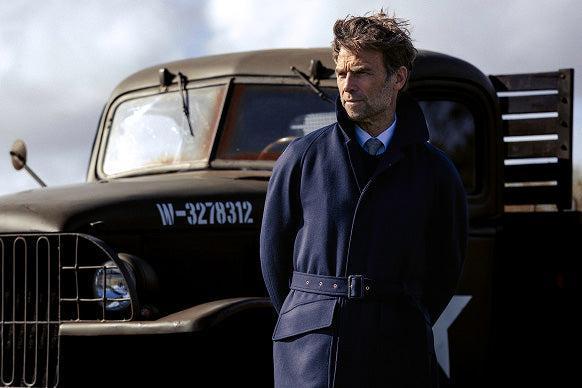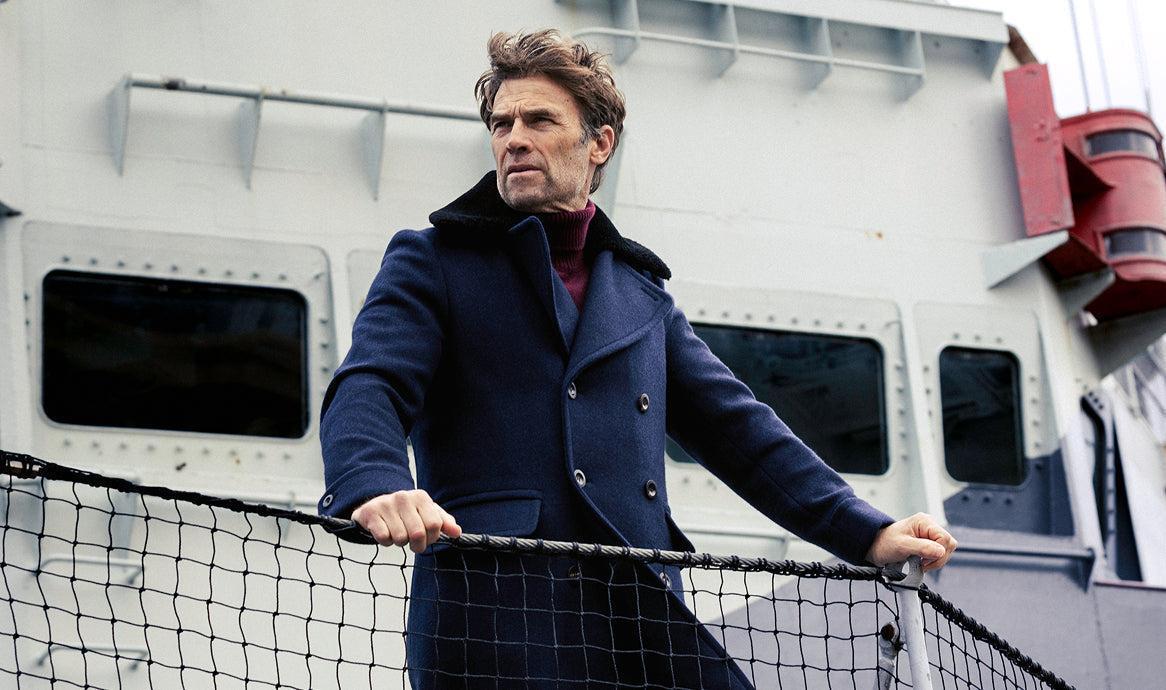
This might be my favourite material we’ve ever designed.
A brown version of the English Tweed fabric first launched a couple of years ago, it’s dark and subtle, with great depths in the mix of brown and black, plus natural flecks of cream and biscuit that add varied texture.
The yarn is still the natural colours of the sheep - it’s undyed wool, so those are the browns and blacks of the animal, without any bleach or colouring. This must be one of the reasons it looks so natural, and the material itself has a similarly organic feel of substance and pliability - it’s not scratchy, but has that feel of a natural fleece.
The yarn is still the natural colours of the sheep - it’s undyed wool, so those are the browns and blacks of the animal, without any bleach or colouring. This must be one of the reasons it looks so natural, and the material itself has a similarly organic feel of substance and pliability - it’s not scratchy, but has that feel of a natural fleece.
The English Tweed was designed to be big and enveloping - something to wrap yourself up in during colder months - and so you get a lot of that wool to fasten round the body, with the double-breasted front buttoning all the way up to the chin.


The fit is generous but can be cinched against the cold, and the buttoning is low and slouchy. While there are many materials we could use for something like the Donegal overcoat, the English Tweed really suits this type more than any other.

Apart from the material, the coat is exactly the same as the first one, introduced in 2023. Compared to that version, this brown English Tweed has the advantage that it sits alongside a grey, navy or indeed camel Donegal coat, offering an nice alternative colour, unlike the grey first version.
But the design is the same: a belt that fastens by doubling back on itself; a waist button on the hip and then two rows all the way up; a pleat in the back that allows freedom of movement without letting in any cold blasts of air.
But the design is the same: a belt that fastens by doubling back on itself; a waist button on the hip and then two rows all the way up; a pleat in the back that allows freedom of movement without letting in any cold blasts of air.
The two hip pockets are lined with cashmere, but also have a slit that allows access to larger ones on the inside of the coat. These so-called ‘through’ pockets enable you to access something larger like a book or a pair of gloves without having to unbutton the coat.
And the slanted pockets on the chest do the same thing - even with the coat buttoned all the way up, you can access a slanted pocket tucked just behind the lapel, and so get to your phone or wallet.
And the slanted pockets on the chest do the same thing - even with the coat buttoned all the way up, you can access a slanted pocket tucked just behind the lapel, and so get to your phone or wallet.


As is often the case with these coats, we’ve focused in today’s article on what’s different about the new version - it’s colour and texture. If you’re unfamiliar with the design and would like to see things like all the ways it buttons up, have a look at the original launch article here.


That article also shows the through-pockets, and has more angles on the silhouette. Today is more about the vibe.
Fortunately, when we photographed this coat it wasn’t too hot, and I was able to stroll around Greenwich and the park, wrapping and buttoning myself up. It reminded me of the pleasure of walking in a big coat: pushing it behind you when the cold doesn’t require anything more, stuffing the pockets with everything you need for the day.
Fortunately, when we photographed this coat it wasn’t too hot, and I was able to stroll around Greenwich and the park, wrapping and buttoning myself up. It reminded me of the pleasure of walking in a big coat: pushing it behind you when the cold doesn’t require anything more, stuffing the pockets with everything you need for the day.

In these images I’ve worn the coat with just one outfit - a Rubato lambswool crewneck, a PS undershirt, black 501s, Edward Green boots and a Trunk scarf: a cold-colour smart-casual look.
But the English Tweed works equally well with tailoring, as shown in that launch piece with a cord suit, a shirt and a knit tie. I’ve tried wearing the new colour with grey and dark-navy suits and it’s very nice, as well as a variety of jackets. Most menswear colours are good - even olive, if it’s dark.


The cloth was woven by Marling & Evans in Huddersfield and made by Private White V.C. in Manchester, so along with the English wool it’s a very locally sourced coat. The horn buttons are Italian, but then these particular dusty, matte ones are our favourite and a bit of a signature. They also go particularly nicely with the dark brown.





Leave a comment
This site is protected by hCaptcha and the hCaptcha Privacy Policy and Terms of Service apply.